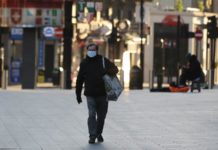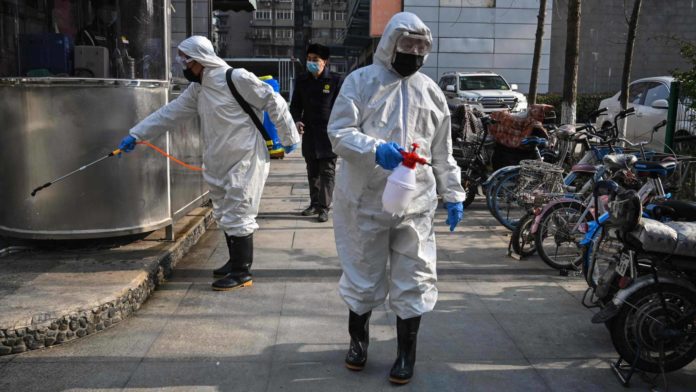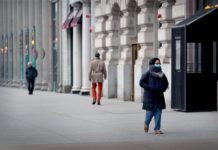Authorities are stepping up protective measures to prevent a second wave of infection
The top infectious disease expert of the United States, Dr. Anthony Fauci said on Thursday that he does not see reason why every state hasn’t issued stay-at-home orders as novel coronavirus cases continue to surge across the US. “I don’t understand why that’s not happening.”
More than 30 states and the District of Columbia have ordered their residents to stay at home. Fauci said governors that have held out thus far “really should” reconsider with the number of US cases passing 236,000 on Thursday and continuing to climb.
“You know, the tension between federally mandated versus states’ rights to do what they want is something I don’t want to get into,” he said. “But if you look at what’s going on in this country, I just don’t understand why we’re not doing that.”
Fauci’s message appears to be at odds with that of President Donald Trump, who has repeatedly said that he doesn’t think a nationwide stay-at-home order is necessary, stressing the need for flexibility between different states. “You have to look — you have to give a little flexibility,” Trump said at the White House press briefing. “If you have a state in the Midwest, or if Alaska, for example, doesn’t have a problem, it’s awfully tough to say, ‘close it down.’ We have to have a little bit of flexibility.” Fauci also stressed the dangers of relaxing social distancing guidelines too early on Thursday, stating pointedly, “If you back off, and you don’t mitigate, there is a possibility that number (of deaths) will go up. And that is the worst possible thing in the world you want to see,” he said. “And that’s the reason why I am so adamant about when we say we have got to follow those guidelines, you really got to take it seriously.”
Whilst majority of the world, including the United States is enforcing lockdown policies as a result of the spread of the coronavirus, China, which was once the center of the epidemic, is putting down measures to open up and go back to their once normal lives.
Travel restrictions that were enforced are being relaxed across most of the country relaxed, and very soon, people will be allowed to leave Wuhan, where the virus was first detected late last year, for the first time in more than two months.
However, this move has been questioned by other countries, who have doubts about the numbers being reported from China. There is a question as to whether the worst has really been dealt with. Also going back to a report from CNN in Wuhan in January, it was suggested the numbers were not adding up when compared with stories from the front lines. In part, this discrepancy may be because of something that many countries have in common, a shortage of tests.
Dora Jiang, whose family are in Wuhan, said it took four days for her uncle to get tested. “It’s really difficult. And it’s really emotional for me,” she said. “I don’t think it’s because they really want to control numbers, but I think it’s more about the capacity.”
Chinese officials have always refuted any suggestion that their data is not accurate. They also heavily stress the country’s recovery rate, pointing out that of about 82,000 reportedly infected in China, some 76,000 have survived the illness. But their case has not been helped by multiple changes to how the numbers are tabulated. Just this week, after some pressure, health officials began releasing data on “asymptomatic cases.” Many people who are infected by the illness do not necessarily know they have it, but can still potentially spread the virus to others. This has led to fears of a potential second wave of infections in China, as people resume traveling around the country and attempt to get back to work.
The authorities last week introduced strict new limits on foreigners arriving in the country, in order to prevent just a second wave, but if those who are skeptical of the official numbers are correct, the true danger may be in the country already.
The inhabitants of the Chinese metropolis of Wuhan with its millions of inhabitants have apparently been urged once again to stay in their own homes. The Chinese authorities are stepping up protective measures to prevent a second wave of infection. This is reported by the “Guardian”. Experts warned that the rapid containment of the virus in China also brings with it the risk of new outbreaks. Although the number of new cases of infection in Wuhan has dropped significantly since February, the Chinese authorities still consider the risk of a relapse to be high.
Meanwhile, the USA has the highest number of corona cases with more than 234,000 cases. Currently, there are about 1,030,633 cases reported worldwide.






























